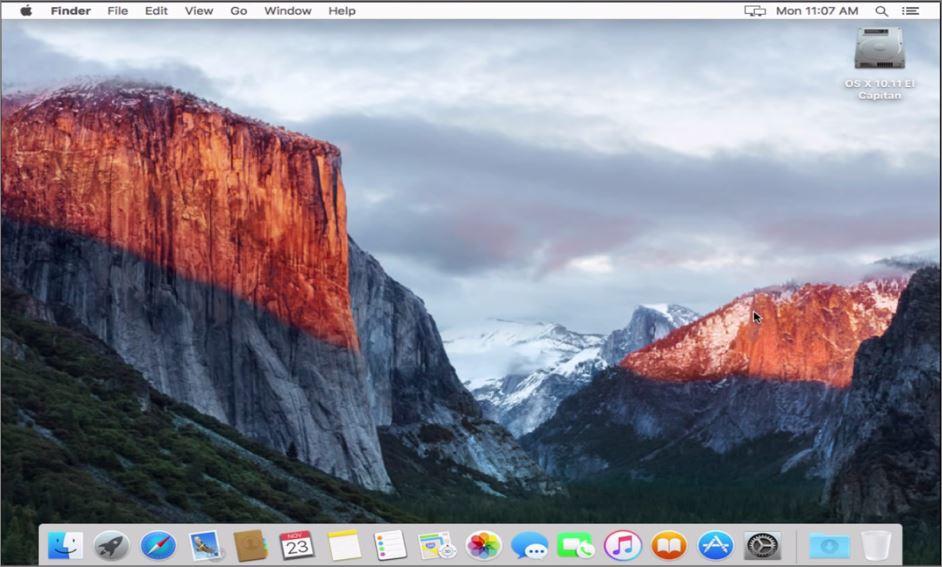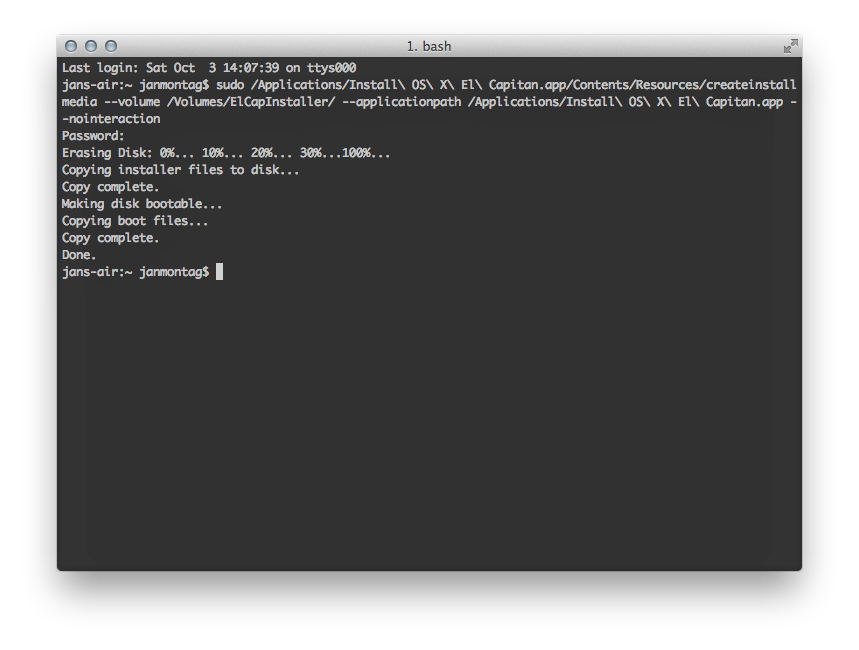
If the installer window opens after downloading the OS, close it by clicking the Install macOS menu and selecting Quit install macOS. Make sure the USB drive is still connected to your Mac. Return to the Utilities folder on your Mac and open the Terminal app. At the Terminal prompt, type one of the following commands, depending on your version of macOS. OS X El Capitan: sudo /Applications/Install\ OS\ X\ El\ Capitan.app/Contents/Resources/createinstallmedia -volume /Volumes/ MyVolume MyVolume -applicationpath /Applications/Install\ OS\ X\ El\ High Sierra: sudo /Applications/Install\ macOS\ High\ Sierra.app/Contents/Resources/createinstallmedia -volume /Volumes/ MyVolume MyVolume.macOS Mojave: sudo /Applications/Install\ macOS\ Mojave.app/Contents/Resources/createinstallmedia -volume /Volumes/ MyVolume MyVolume.macOS Catalina: sudo /Applications/Install\ macOS\ Catalina.app/Contents/Resources/createinstallmedia -volume /Volumes/ MyVolume MyVolume.macOS Big Sur: sudo /Applications/Install\ macOS\ Big\ Sur.app/Contents/Resources/createinstallmedia -volume /Volumes/ MyVolume MyVolume.Replace the string My Volume My Volume with the volume name of your USB drive. This is not the password for the account that you use to log in. Rather, it’s the password for the root user on your Mac. If you don’t know the password for the root user, follow this Apple support page to learn how to change this password.



#How to create a bootable usb os x el capitan from pc how to# #How to create a bootable usb os x el capitan from pc mac os#.#How to create a bootable usb os x el capitan from pc how to#.


 0 kommentar(er)
0 kommentar(er)
